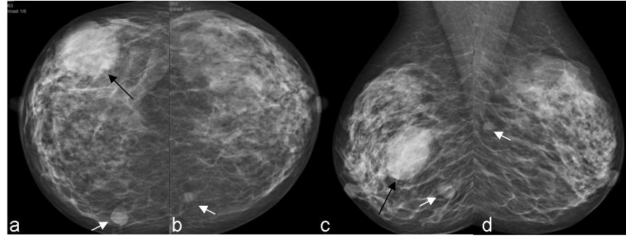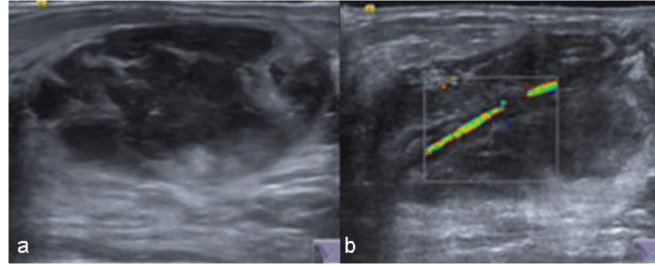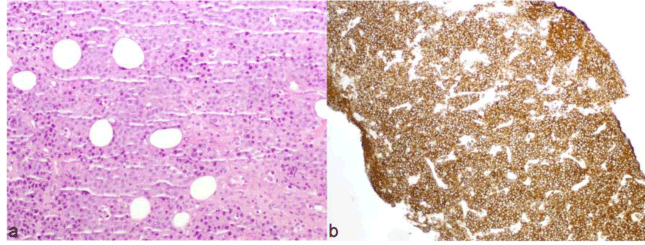Make the best use of Scientific Research and information from our 700+ peer reviewed, Open Access Journals that operates with the help of 50,000+ Editorial Board Members and esteemed reviewers and 1000+ Scientific associations in Medical, Clinical, Pharmaceutical, Engineering, Technology and Management Fields.
Meet Inspiring Speakers and Experts at our 3000+ Global Conferenceseries Events with over 600+ Conferences, 1200+ Symposiums and 1200+ Workshops on Medical, Pharma, Engineering, Science, Technology and Business
Case Report Open Access
Breast Multiple Myeloma
| Dulce Antunes1*, Mónica Coutinho2 and José Carlos Marques2 | |
| 1Serviço de Imagiologia Geral, Hospital de Santa Maria - Centro Hospitalar Lisboa Norte, Portugal | |
| 2Serviço de Imagiologia Geral, Instituto Português de Oncologia de Lisboa Francisco Gentil, Portugal | |
| Corresponding Author : | Dulce Antunes Serviço de Imagiologia Geral Hospital de Santa Maria-Centro Hospitalar Lisboa Norte, Portugal E-mail: dulceantumail.com |
| Received May 06, 2013; Accepted May 21, 2013; Published May 27, 2013 | |
| Citation: Antunes D, Coutinho M, Marques JC (2013) Breast Multiple Myeloma. OMICS J Radiology 2:124. doi: 10.4172/2167-7964.1000124 | |
| Copyright: © 2013 Antunes D, et al. This is an open-access article distributed under the terms of the Creative Commons Attribution License, which permits unrestricted use, distribution, and reproduction in any medium, provided the original author and source are credited. | |
Visit for more related articles at Journal of Radiology
Abstract
Breast involvement by Multiple Myeloma (MM) is rare and the diagnosis is difficult because of the unspecificity of clinical and radiological features. The authors report a case of breast masses that were the first symptoms of recurrent MM after complete remission and bone marrow transplantation.
| Introduction |
| MM is a disseminated malignant B-cell lineage neoplasm characterized by clonal proliferation of plasma cells in the bone marrow with an excessive production of monoclonal immunoglobulins by the malignant cells, more frequently IgG (55%) and IgA (21%). Clinically apparent extra osseous manifestations are present in less than 5% of patients with and are usually associated with more aggressive behaviour, resistance to treatment and shorter survival [1]. The involvement of breast with multiple myeloma has been rarely reported. To our knowledge only 20 patients with such involvement have been reported in the literature and only one occurred after remission of the disease. Clinical and radiological features are similar to other epithelial and lymphoproliferative breast malignancies and the diagnosis frequently depends on biopsy. |
| Case Report |
| A 47-year-old woman was referred for breast biopsy of palpable mass in the right breast. She had been diagnosed with IgA λ MM a year before and, after achieving complete remission with chemotherapy, had been submitted to autologous bone marrow transplantation. Seven months after transplantation breast examination revealed a volumous mass in the external quadrants of the right breast, without inflammatory signs or nipple discharge. |
| Mammogram (Figure 1) showed few well-defined soft tissue density masses in both breasts. The larger one, located in lateral quadrants of the right breast, was moderately dense and had well defined lobulated contours. High frequency ultrasound (Figure 2) showed multiple hypoechoic oval and round nodules. The most volumous one measured 5×2, 8 cm, had well defined contour and heterogeneous predominantly hipoechoic echotexture, with central power Doppler. Given the suspicious features of the lesions and keeping in mind the differential with breast carcinoma, the dominant lesion in the right breast was submitted to ultrasound guided core needle biopsy (14G) that revealed sheets of immature and mature plasma cells according to breast involvement by MM (Figure 3). Diagnostic workup revealed systemic recurrence and other soft tissue masses were identified, namely extradural dorsal masses that forced to laminectomy. The patient died two months later from pneumonia. |
| Discussion |
| MM is a disease of plasma cells that occurs primarily in middleaged individuals with an estimated incidence in the US population of 3-4 cases/100,000 individuals. Most patients with plasma cell neoplasia have generalized disease at diagnosis fulfilling the criteria of MM. A minority of patients present with single extramedullary mass of monoclonal plasma cells, plasmacytoma, either in bone (97%) or soft tissues (3%). |
| Breast mass is a rare expression of MM and the majority of breast plasmacytomas were reported in woman, with mean age of presentation of 53 years [2-4]. They can be multiple and bilateral, with ranging sizes between 1 and 7,5cm and involvement of axillary lymph nodes has been described [5]. These tumors can be truly solitary plasmacytic tumors (without evidence of concurrent MM or other plasmacytic lesions) or can precede, occur synchronously, or become evident after the diagnosis of MM. As in the reported patient they can herald the recurrence of previously quiescent myeloma [5]. |
| Clinically the most frequent sign/symptom is a palpable mass but skin thickening and inflammatory signs may occur and suggest breast abscess or inflammatory carcinoma [6]. The differential diagnosis of a mass presenting within the clinical context of plasma cell neoplasms includes primary epithelial neoplasms of the breast, plasma cell mastitis, non-Hodgkin’s lymphoma with plasmacytic features, epithelioid malignant melanoma, and pseudolymphoma [7]. Khalbuss et al. [8] described a synchronous presentation of breast carcinoma with plasmacytoid cytomorphology and MM [8]. |
| Imaging of the plasmacytic tumors of the breast follow the same protocol as for any suspicious breast mass and the features of breast MM are similar to other forms of primary and metastatic breast disease: |
| In a mammogram it can present as single or multiple, rapidly growing, round masses of variable sizes, with well-defined or irregular contour, without spiculations and microcalcifications [2]; |
| Ultrasonographic findings include well-defined round, solid, hypo-or hyperechoic masses with posterior acoustic enhancement or shadowing; |
| Magnetic Resonance (MR) depicts hypointensity on T1-weighted images, slight hyperintensity on T2-weighted image and early rim enhancement and washout on post contrast series [2]; |
| Breast plasmacytomas demonstrate low grade uptake of 18-Fluorodeoxyglucose (FDG-18) [9], although Positron Emission Tomography-Computed Tomography (PET-CT) can effectively assess the extent of disease and help differentiate primary from secondary breast disease. |
| As mammographic, ultrasonographic and MR findings may not be diagnostic, the differential with primary carcinoma, other lymphoproliferative diseases and even benign masses depends on histopathological evaluation [1]. |
| Breast MM/plasmacytoma treatment depends on the systemic extension of the disease and, although chemo and radiation are the most frequent options, surgical resection and lymph node dissection can also be considered [3,10,11]. |
| Conclusions |
| The authors report a case of breast MM after disease remission and bone marrow transplantation. To our knowledge among the published cases of breast MM/plasmacytoma only one occurred after remission but without transplantation. According to the literature, the mammogram and ultrasound findings were inconclusive and diagnosis was brought by biopsy. |
References |
|
Figures at a glance
 |
 |
 |
| Figure 1 | Figure 2 | Figure 3 |
Post your comment
Relevant Topics
- Abdominal Radiology
- AI in Radiology
- Breast Imaging
- Cardiovascular Radiology
- Chest Radiology
- Clinical Radiology
- CT Imaging
- Diagnostic Radiology
- Emergency Radiology
- Fluoroscopy Radiology
- General Radiology
- Genitourinary Radiology
- Interventional Radiology Techniques
- Mammography
- Minimal Invasive surgery
- Musculoskeletal Radiology
- Neuroradiology
- Neuroradiology Advances
- Oral and Maxillofacial Radiology
- Radiography
- Radiology Imaging
- Surgical Radiology
- Tele Radiology
- Therapeutic Radiology
Recommended Journals
Article Tools
Article Usage
- Total views: 16232
- [From(publication date):
July-2013 - Aug 30, 2025] - Breakdown by view type
- HTML page views : 11596
- PDF downloads : 4636
